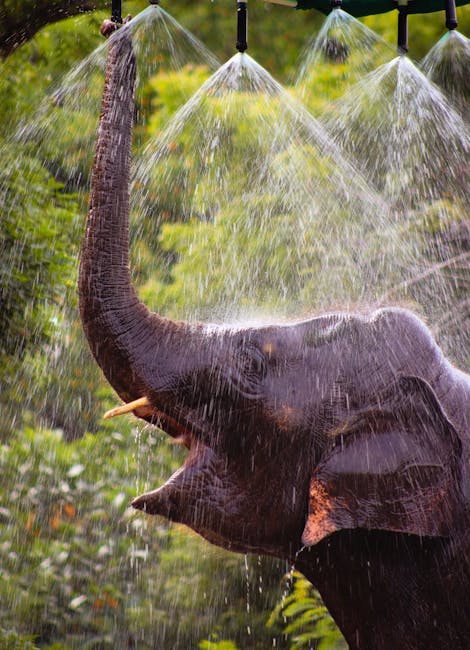-
Cryptocurrency as a New Threat Frontier: The report highlights the increasing targeting of cryptocurrency exchanges, with attacks on WazirX and Bybit resulting in significant financial losses. Hackers are migrating to various cryptocurrencies, including Monero (XMR).
-
Emergence of New Malware: A new malware variant scans for and steals crypto wallets/keys within infected environments, allowing unauthorized access to crypto assets.
-
Deepfakes and AI-Generated Content Risks: The report emphasizes the use of deepfakes and AI-generated content as powerful tools for social engineering attacks, mimicking voices and appearances.
-
Prompt Hacking Concerns: Prompt hacking vulnerabilities are more common in AI applications that host LLMs locally.
-
Jailbreaking of AI Systems: The report highlights the successful jailbreaking of even secure AI systems like ChatGPT, enabling circumvention of safeguards.
-
Malicious LLMs: Malicious LLMs, such as WormGPT and FraudGPT, are capable of creating convincing phishing emails, malware, and automating exploit development.
-
Policy Recommendations: The report urges policymakers to implement clear AI regulations and mandate security testing of APIs used in AI applications.
-
Government Initiatives in Cybersecurity: The Indian government is actively working on cybersecurity through initiatives like the National Cyber Coordination Centre, Cyber Surakshit Bharat, and CERT-In.
12.04.25
PLFS 2024
-
PLFS 2024 Released: The Ministry of Statistics and Programme Implementation (MoSPI) has released the Periodic Labour Force Survey (PLFS) 2024, providing insights into India’s labour market. Data collected during July 2023 – June 2024.
-
Urban LFPR Increase: Urban Labour Force Participation Rate (LFPR) rose for males (74.3% to 75.6%) and slightly for females (25.5% to 25.8%), increasing overall urban LFPR to 51.0%. All-India LFPR remained stable at 56.2%.
-
Stable WPR: All-India Worker Population Ratio (WPR) was nearly unchanged at 53.5%.
-
Marginal UR Changes: Rural unemployment fell slightly to 4.2%. Urban male unemployment rose, female UR declined, keeping overall urban UR at 6.7%. All-India UR dipped from 5.0% to 4.9%.
-
PS+SS Stability: LFPR remained largely stable nationally, with a slight decline from 59.8% to 59.6%.
-
Slight WPR Decline (PS+SS): All-India WPR declined slightly from 58.0% to 57.7%.
-
Slight UR Increase (PS+SS): All-India UR rose slightly from 3.1% to 3.2%.
-
Gender Disparity: Female LFPR remains lower than male.
-
Stagnant Employment: WPR and LFPR show minimal year-on-year change, indicating slow job creation.
Beijing India Report ’24
- Beijing India Report 2024 (India’s Report on Beijing+30) Highlights: Assesses India’s progress on gender equality since the 1995 Beijing Declaration, revealing gaps in addressing the gender-climate nexus.
- Progress & Gaps: India has enacted laws like the Protection of Women from Domestic Violence Act and the POSH Act, but inconsistent implementation results in a gap between legislation and lived reality.
- Climate-Gender Integration Needed: The report lacks a robust climate lens, missing the crucial integration of gender and climate considerations, particularly affecting rural communities.
- Disproportionate Climate Impacts: Climate change exacerbates existing inequalities, impacting women’s health (anaemia, violence), economic stability (income loss in agriculture), and unpaid care work (increased workload due to resource scarcity).
- Women’s Role in Adaptation: The report overlooks the critical role of women’s traditional knowledge in sustainable agriculture and natural resource management for climate adaptation.
- Policy Recommendations: Calls for gender-responsive climate action plans (NAPCC, SAPCC), climate budgeting, community climate consultations, and support hubs to empower women in climate decision-making.
- Private Sector Engagement: Urges green funds to foster women-led climate innovations and ensure their participation in the green economic transition.
- International Commitments: India is a signatory to international frameworks that mandate gender equity and climate justice, including Universal Declaration of Human Rights (1948), ICCPR (1966), CEDAW (1979), UN Convention Against Corruption (2003), Agenda 2030 for Sustainable Development, and Beijing Declaration and Platform for Action (1995).
- Overall significance: It highlights China’s strategic interest in India’s growth and attempts to recalibrate bilateral ties amid border tensions and trade imbalances ($100 billion in 2023). Focus on renewable energy collaboration, digital governance, and connectivity projects like the International North-South Transport Corridor (INSTC).
Local Data Imperative
- India’s Data Gap: India generates approximately 20% of global digital data but possesses less than 2% of global data center capacity.
- Economic Imperative: Expanding data centers can attract USD 400 billion in investments and support India’s USD 5 trillion economy goal by boosting e-commerce, fintech, AI, and cloud computing.
- Job Creation: Data centers can generate 1-2 million direct jobs and three times as many indirect jobs in related sectors.
- Data Sovereignty: Local data centers ensure data is stored within India, in compliance with the Digital Personal Data Protection Act, 2023, and enhances national security.
- AI Hub Potential: Developing data centers positions India as a future hub for AI, capitalizing on the potential of generative AI.
- Global Competitiveness: India can leverage its data generation strength for data processing and cloud services, similar to its success in IT services.
- Infrastructure Boost: Data center growth will stimulate real estate, renewable energy, and telecom infrastructure development.
- Investment Needs: Building the targeted data center capacity requires significant capital investment (USD 400 billion by 2030), creating challenges.
- Trade and Cost Concerns: Data localization mandates could lead to reciprocal trade barriers, increased costs for consumers, and reduced competition.
- Operational Challenges: Unreliable power supply, high cooling requirements, limited undersea cables, and sustainability concerns pose operational challenges.
- Policy Support is Crucial: India needs policies such as encouraging data localization via incentives and subsidized electricity tariffs for promotion.
- Global Digital Leader: India has the highest number of users on several key social media platforms, emphasizing the need for local data management.
Gaurav LRGB
-
Successful Release Trials: DRDO successfully conducted release trials of the Long-Range Glide Bomb (LRGB) ‘Gaurav’ from a Su-30 MKI aircraft between April 8-10, 2025.
-
Pin-Point Accuracy: The trials demonstrated a range close to 100 km with pin-point accuracy against a land target on an island.
-
Indigenous Design: ‘Gaurav’ is a 1,000 kg class glide bomb indigenously designed and developed.
-
Glide Bomb Functionality: Unlike traditional bombs, it uses fins/wings for gliding, enabling the launch aircraft to stay out of range of enemy air defenses. It’s unpowered, relying on momentum and aerodynamic surfaces.
-
Dual Guidance System: Equipped with a dual guidance system combining Inertial Navigation System (INS) with GPS.
-
Partnerships: The project involved collaboration with Indian private sector partners like Adani Defence Systems & Technologies, Bharat Forge, and MSMEs.
-
Operational Capability: Launched from high altitudes (over 40,000 feet), it can glide to a range of over 100 kilometers.
-
Air Force Induction: The trials are paving the way for the weapon’s induction into the Indian Air Force (IAF).
-
Enhancement of Armed Forces Capabilities: The development of LRGB will further enhance the capabilities of the Armed Forces to a great extent.
Panama Canal
-
US-Panama Security Pact: A new defense and security agreement aims to counter China’s growing influence over the Panama Canal.
-
US Concerns: The US is wary of China’s operation of two major ports at the Canal, fearing influence over global shipping.
-
Historical Context: The US originally constructed and controlled the Canal, transferring full control to Panama in 1999.
-
Strategic Importance: The Canal connects the Atlantic and Pacific Oceans, significantly reducing shipping distances. It is strategically important waterway in the world, second to Suez Canal.
-
US Troop Deployment: The agreement allows US military personnel to deploy to Panama-controlled facilities for training and exercises.
-
No US Bases: The agreement stops short of allowing the US to build new bases.
-
Trump’s Stance: President Trump claims China has too much influence over the Canal and aims to reassert US control.
-
Canal’s Significance: The Panama Canal handles a significant portion of US container traffic and world trade.
-
US Goal: The Trump administration wants to “take back” control of the waterway, which the US funded and built.
Pamban Bridge: The New Era
- Inauguration: Prime Minister Narendra Modi inaugurated the New Pamban Bridge, India’s first vertical lift railway sea bridge, enhancing connectivity between Rameswaram and mainland India.
- Purpose: Replaces the 1914 Pamban Bridge, improving transportation and trade links.
- Design & Construction: Designed and built by Rail Vikas Nigam Limited (RVNL) under the Ministry of Railways.
- Lifespan: Built to last over 100 years.
- Vertical Lift: Features a 72.5-meter vertical lift span that rises 17 meters to allow ships to pass; enhancing rail-maritime coordination.
- Length: Spans 2.07 km across the Palk Strait.
- Capacity: Designed for double tracks, supporting heavier, faster trains.
- Durability: Built to withstand turbulent waters, cyclones, and seismic activity, a crucial improvement given past incidents like the 1964 tsunami.
- Global Significance: Joins the ranks of globally recognized bridges with unique designs, such as the Golden Gate, Tower, and Oresund bridges.
- Historical Context: The original Pamban Bridge was India’s first sea bridge, opened in 1914, facilitating trade.
Tamil Nadu’s Tusk Trouble
-
Re-emergence of Wildlife Crime: Elephant poaching in Tamil Nadu raises concerns about a resurgence of wildlife crime threatening elephant survival.
-
Elephant Population Fluctuation: Tamil Nadu’s elephant population declined significantly between 2012 and 2017 but showed some recovery by 2024,indicating the impact of poaching.
-
National Heritage Animal: Elephants are India’s National Heritage Animal and a keystone species essential for forest ecosystem health, highlighting the importance of their protection.
-
Indian Elephant Subspecies: Indian elephants represent a significant portion of the Asian elephant population, emphasizing India’s role in their conservation.
-
Key Threats: Ivory trade and human-animal conflict are the key threats to the elephant population.
-
Warangal Chapata Chilli GI Tag: While not directly related to elephant poaching, news of the Warangal Chapata chilli from Telangana receiving a Geographical Indication (GI) tag highlights agricultural developments that can impact local economies and potentially influence land use and conservation efforts in the region.
-
GI Tag Benefits: Farmers expect the GI tag to nearly double the price of the Warangal Chapata chilli, demonstrating the economic incentive for cultivating and protecting regional specialties.
Blue Washing
-
CPCB’s “Blue Category” Concerns: The Central Pollution Control Board (CPCB) reclassified Waste-to-Energy (WTE) incineration, previously in the highly polluting “red category”, into a new “blue category” based on Essential Environmental Services (EES).
-
“Bluewashing” Accusations: This reclassification is criticized as “bluewashing” because it misleadingly portrays WTE incineration as environmentally friendly despite burning unsegregated waste. This mirrors greenwashing, but focuses on social and economic responsibility.
-
WTE Incineration & Pollution: WTE incineration generates “dirty electricity” and is a polluting activity, contradicting its new categorization.
-
CPCB Rationale & Implications: The CPCB has introduced a “blue category” for industries, which would be considered as EES to ease regulatory burden and give consent to pollute for longer duration.
-
Industry Categorization for decision-making: The categorization is based on Pollution Index (PI) which considers emissions, effluents, waste and resources. The categories vary from White (least polluting) to Red (most polluting).
-
Bluewashing Tactics: Bluewashing uses vague claims, selective disclosure, symbolic affiliations, and misleading certifications to create a false impression of ethical practices without true action.
Asiatic Lions
-
Expanding Range: Asiatic lions are increasingly venturing outside Gir National Park, including into coastal areas like Diu Island. This indicates potential range expansion beyond traditional habitat.
-
Diu Sightings: Frequent lion sightings on Diu, with instances of forest officials relocating lions back to Gir, suggest that lions perceive Diu as part of their territory due to its proximity to Gir via a tidal creek.
-
Carrying Capacity: Some conservationists believe the increased movement into Diu suggests that Gir National Park may be approaching its carrying capacity for lions.
-
Conservation Success: The Asiatic lion population has grown from critically endangered to endangered through dedicated conservation efforts, increasing numbers to 674 lions roaming across 30,000 sq km in Gujarat.
-
Habitat Expansion Necessitates Management: As lion populations grow and expand beyond the boundaries of Gir National Park and into human-dominated landscapes such as Diu Island, this necessitates a comprehensive and adaptive wildlife management strategy. It may be necessary to increase or add new conservation areas for protection of the species.
-
Project Lion: The government has initiated ‘Project Lion’ to ensure their safety and create a second habitat in Madhya Pradesh’s Kuno-Palpur.
-
Threats Remain: Despite population growth, Asiatic lions are still vulnerable due to limited genetic diversity, potential for disease outbreaks, and habitat fragmentation which poses extinction risks.









